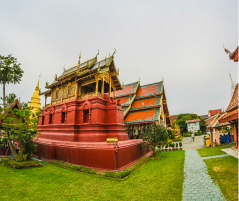The caste system has been a significant aspect of Indian society for centuries, shaping social structures and relationships. Understanding this complex system requires a deep dive into its historical origins and implications on modern society. In this article, we will explore the caste system in India, its ancient social hierarchy, and its impact on contemporary society.
The Caste System: An Ancient Social Hierarchy
The caste system in India is a hierarchical social structure that assigns individuals to specific social groups based on their birth and occupation. The system is believed to have originated from ancient Hindu scriptures, where individuals were categorized into four main varnas or classes – Brahmins (priests and scholars), Kshatriyas (warriors and rulers), Vaishyas (traders and agriculturists), and Shudras (laborers and service providers). Below these varnas were the Dalits or Untouchables, who were considered outside the caste system and faced severe discrimination.
Caste identity is inherited and passed down through generations, with individuals being born into a specific caste and expected to adhere to the customs and traditions associated with it. The caste system also dictated social interactions, marriage practices, and occupational choices, reinforcing the division and hierarchy among different caste groups. Despite efforts to abolish caste-based discrimination and promote social equality, the system continues to influence social relationships and opportunities in contemporary India.
Impact of Caste System on Modern Society
The caste system has had a profound impact on modern Indian society, influencing politics, education, and economic opportunities. Discrimination based on caste still persists in various forms, leading to social inequalities and injustices. Many marginalized communities continue to face discrimination and exclusion, limiting their access to resources and opportunities for social mobility.
The caste system has also affected political representation and governance in India, with caste-based politics playing a significant role in elections and policy-making. Caste-based reservations and affirmative action policies have been implemented to address historical injustices and provide opportunities for marginalized communities. However, these measures have also sparked debates and controversies regarding meritocracy and fairness in a diverse society. Overall, the caste system remains a complex and pervasive aspect of Indian society, shaping social relationships and identities in nuanced ways.
In conclusion, understanding the caste system requires a deep dive into its historical origins and implications on modern society. While efforts have been made to address caste-based discrimination and promote social equality, the system continues to influence social structures and relationships in India. It is essential to acknowledge the complexities of the caste system and work towards creating a more inclusive and equitable society for all individuals, regardless of their caste identity.





